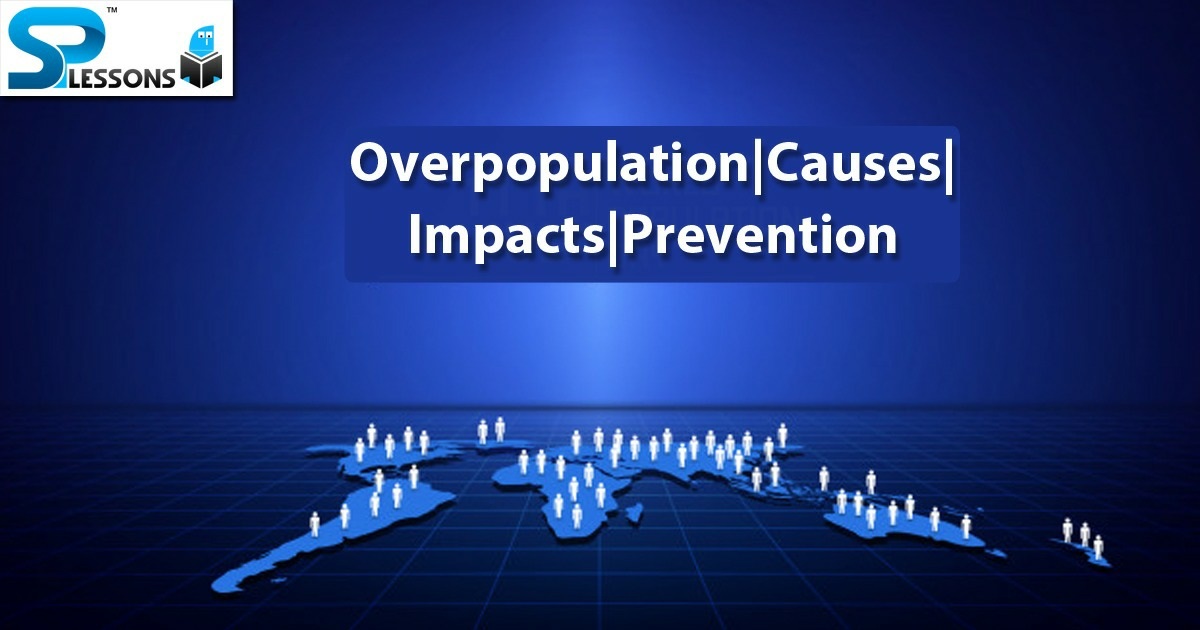 Introduction
Introduction
What is Overpopulation?
- Human overpopulation is an unwanted condition. Overpopulation is a scenario wherein the living human population increases to an undesired level, i.e the total number of humans living in an area/region/country exceeds the sustainable level. The population is increasing at a very high rate and now has reached a point where it is being considered as a major concern for many countries around the world.
- India is the [latex]{2}^{nd}[/latex] most populated country in the entire world, just behind China. Both of these countries contribute to 38% of the total world population, with a combined population of 3 billion.
 Population
Population
What are the causes of Overpopulation?
The three major reasons for the increasing population can be attributed to:
1. Poverty
Poverty, through lack of basic resources and education, leads to overpopulation. Most of the times people contributing to overpopulation have no clue about the aftermath of their actions. According to a recent UN report, just 28 of the poorest countries in the world right now are likely to be contributing the most to population. This report also estimated that these countries will double their population by the year 2050, from 870 million to 1.8 billion.
2. Early marriage
People are marrying at very young ages; child marriage still continues to be a menace in many third-world countries. Most of these couples aren’t mature or educated enough to take major life decisions like family planning, resulting in a number of unwanted children who are, in turn, taken poor care of.
3. Increased Life Expectancy
The average annual birth rate in India was 42/1000 population in 1950-60, now it has decreased to 26/1000 population in 2010. But, on the other hand, the death rate of 43/1000 at the start of the 20th century has now become just an 8/1000 population. Therefore, in the past 100 years, the population has skyrocketed.
What are the major ways society is affected by Overpopulation?
Rise in poverty
Poverty is one of the major factors for overpopulation but it also works the other way around. Overpopulation leads to even more poverty as poor people with large families find it hard to provide even the basic necessities to their family members.
Uneven wealth distribution
Overpopulation leads to an unequal distribution of wealth and income. Consequently, the gap between the rich and the poor is widened further. 1% of society has the most control over all social and economic factors. A class struggle thus continues further.
Migration
Humans always tend to migrate once overpopulation starts eroding the available resources and opportunities. This, in turn, leads to more people entering a more prosperous geographical region. The native population now has to fight for the limited resources, with a surplus of the population at hand. Wars, famines, economic breakdowns, religious persecutions, military coups, etc. all have been known to contribute towards mass migrations across international borders.
The burden on natural resources
Overpopulation puts a burden on basic natural resources and this leads to the exploitation of natural resources. After tipping is reached, it is the poor who have to suffer starvation and unhealthy living conditions. Overpopulation also leads to excessive deforestation which wreaks havoc in nature.
How can countries prevent the increase in population?
Possible methods to tackle overpopulation include:
Awareness - People aren’t aware enough about the effects of overpopulation, so we need to focus on raising awareness across all socio-economic strata. Special focus on the unprivileged section is a must.
Empowering Women - Most women across the lower middle class and rural sector lack the authority when it comes to family planning or reproductive life of a couple. We need to empower women and make them aware of the effects of their decision to bear more children, especially at younger ages.
Promoting family planning - Family planning techniques must be taught to all couples starting a new married life. Spreading awareness about birth control techniques and contraception measures is the most effective method to keep the population within a limit.






